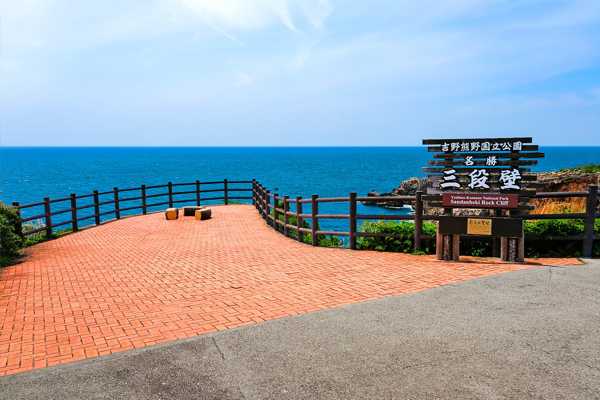The Nagano ski resort hosted the Winter Olympics back in 1998, and its reputation as a world-class ski destination continues to grow. Located in the central Chūbu region of Japan, the easily accessible city draws scores of skiers when the snow starts to fall. A large array of ski resorts (over 80 at last count) reside on all sides of Nagano, giving thrill-seekers plenty of choices.
The ski season in Nagano runs from mid-December until the end of April, though some resorts stay open during the first week of May. Travelling between them is time-consuming, so it’s best to pick one and stick with it. Read through this guide to help you plan your next ski trip to Nagano.
- 1
Where to stay in Nagano?
Which Nagano ski region is right for you?

Over 80 ski resorts sit high in the mountains surrounding Nagano. Most visitors base themselves in one of the following 4 regions:
- Nagano City
- Matsumoto
- Hakuba Valley
- Yamanochi
Nagano City is too far from the ski fields to hit the slopes each morning with ease. Nonetheless, it’s worth overnighting to explore the city’s numerous exciting attractions.
Matsumoto is a small city to the south of Nagano and a great base for skiers wishing to hit the Nomugitoge or Kisofukushima ski resorts. Don’t miss the spellbinding Matsumoto Castle.
The Hakuba Valley is a large ski area about 44 km west of Nagano. Popular with locals and foreigners, it has good nightlife and a vast variety of runs.
East of Nagano, Yamanochi is a sprawling mountain region with a wide range of resorts. It’s also a convenient base to see the famous Snow Monkey Park.
- 2
How to rent skis and purchase a lift pass in Nagano?
Good to know for first-timers

With so many competing ski resorts, it’s crucial to choose the right pass. Most sell one-day or multi-day passes, either online or through their ticket office. Research your resort of choice carefully before committing.
The Hakuba Valley Lift Pass gives you access to all 10 regional resorts and lasts anywhere from 1 to 14 days. The deal typically includes rest days – for example, you can ski 6 days in a 10-day period. Individual day passes are also available. Purchase your pass from a travel agent or the Hakuba Base Camp.
Myoko-Nagano and Rhythm Japan offer equipment hire throughout the Nagano region and may be able to drop your skis off at your hotel. Many accommodations, resorts, and local outlets also rent gear.
- 3
Nagano skiing for beginners
Find excellent beginner slopes

- Adventure
Most Nagano resorts have beginner-friendly runs, although some are better equipped for novices than others.
In the Hakuba Valley, Tsugaike Kogen, Cortina, or Goryu are your best bet for beginners. Elsewhere, Nozawa Onsen and Togari Onsen have great novice and kid-friendly facilities.
- 4
Nagano skiing for intermediates
Where to find the best red runs in Nagano?

- Adventure
Spanning 18 resorts, Shiga Kogen is the biggest interconnected ski area in Japan and offers the widest variety of intermediate runs. It’s popular with domestic tourists, allowing you to mingle with the local crowd.
- 5
Nagano skiing for advanced skiers
Black runs in Nagano

- Adventure
Advanced skiers could consider Happo One in the Hakuba Valley for its adrenaline-pumping Olympic race trails. If tricks are more your thing, Cortina is chock full of hair-raising terrain.
- 6
What to do besides skiing and snowboarding in Nagano
Winter sports and activities in Nagano

- Adventure
- Families
- History
- Photo
In between carving up fresh powder runs, there’s plenty to see and do in Nagano and beyond.
Located near the city centre, Zenkoji Temple is an iconic 7th-century Buddhist shrine with luscious gardens and a glistening treasure trove. Nearby, the Nagano Prefectural Art Museum showcases an eclectic collection of early 20th-century works. And to the west, Togakushi Temple is a series of 5 ancient shrines connected by a path beneath towering cedar trees. If you pass through Matsushiro, don’t miss the magnificent Matsushiro Castle, an impressive recreation of a 16th-century citadel.
Families should pencil in a visit to the Kids’ Ninja Village, a fun-filled theme park with interactive ninja stars and blow-dart games. Kagami Ike Pond is a picturesque place to picnic or hike.
- 7
Dining and restaurants in Nagano
Where to eat in Nagano?

- Food
Many of Nagano’s best restaurants reside near Nagano Station in the heart of downtown.
Sobatei Aburaya is a traditional noodle house with a spacious tatami (matted) dining room. Ask for the buckwheat soba noodles served with grated radish. Nagano Meijitei specialises in hearty Katsudon, a delicious crumbed pork cutlet dish served with rice, vegetables, and eggs. Swing by Tsukiji-Nihonkai for scrumptious sushi, sashimi, and miso soup.
Over on Mount Togakushi, Uzuraya is a serene soba noodle haunt that does sublime crispy tempura.
A wide array of restaurants cater to hungry skiers in each resort. However, the alpine dining scene isn’t as sophisticated as in Hokkaido.
- 8
Nagano Shopping
Where to shop in Nagano

- Shoppers
Nagano is a top spot to shop, whether you’re after everyday essentials or traditional souvenirs.
Midori Nagano is the city’s premier mall. Located inside the train station, this enormous modern megaplex has a broad range of boutiques and stores. Even if you don’t want to buy anything, take the time to meander Gondo Shopping Street. As Nagano’s main pedestrian thoroughfare, the indoor arcade has rows of shops and izakaya (informal bars).
For a spicy souvenir, pop into Yawataya Isogoro Main Store. This landmark spice shop sells sesame, masala, and some seriously strange ice cream. The store sits on Zenkoji Omotesando, a famous Nagano street full of galleries and handicraft stalls.
- 9
Nagano nightlife
Where to enjoy après ski in Nagano for families and groups?

- Nightlife
Nagano has thriving nightlife for a city of its size, hosting everything from intimate little lounges to booming late-night bars.
For a civilised daytime drink, head to Nishinomon-Yoshinoya and sip artisanal sake. Staff offer informative brewery tours, and there’s a leafy garden for extended tasting sessions – try the plum wine.
Music and Bar Fame is a hit for its happy-go-lucky vibe and live DJ performances incorporating anime and video game tunes. For a raucous live music venue, Nagano Club Junk Box is a grungy underground spot with a lively clientele. Should you fancy a tipple in Matsumoto, GNU does heady Redbull and tequila cocktails in a moody, minimalist lounge.
Most of the outlying ski resorts feature high-altitude bars. But again, the alpine nightlife here isn’t as rowdy as in Niseko.
- 10
Snow Monkey Park
Home of Nagano’s furry inhabitants

- Photo
- Unusual
Snow Monkey Park is home to a curious troop of Japanese macaques that come to bathe in its mineral-rich hot springs. Also known as Jigokudani Monkey Park, the site resides in Joshinetsu Kogen National Park, a lush conservation area established to protect their natural habitat. As the monkeys flourished, a few cheeky creatures began copying humans they saw bathing in an outdoor onsen (hot spring) – monkey see, monkey do.
Two hiking trails (10 or 30 minutes) meander through a verdant forest before arriving at the site. The best time to see the spectacle is winter when thick snow blankets the scene. While the monkeys are accustomed to their human onlookers, it’s best not to bring any food.
Location: 6845 Hirao, Yamanochi, Shimotakai District, Nagano 381-0401, Japan
Open: Daily from 8.30 am to 5 pm
Phone: +81 (0)269-33-4379
Map - 11
How to Get to Nagano
Factual travel information

Nagano Station is the city’s main gateway, offering convenient connections to numerous Japanese destinations. The Nagano Shinkansen Asama (bullet train), for example, takes just 90 minutes from Tokyo.
Another option is to catch a flight to Shinshu-Matsumoto Airport. From there, Nagano Snow Shuttle runs buses to the main ski resorts and central Nagano. The company also connects Tokyo’s Haneda and Narita airports, as well as downtown Nagano, with the major ski resorts.
If you plan on visiting numerous ski resorts in the region, invest in renting a car or joining a multi-resort tour. Public transport will be sufficient to get you to and around a single ski resort.
The local bus and train system in Nagano City is fast and efficient. Taxis are widely available, but the fares can add up fast.









